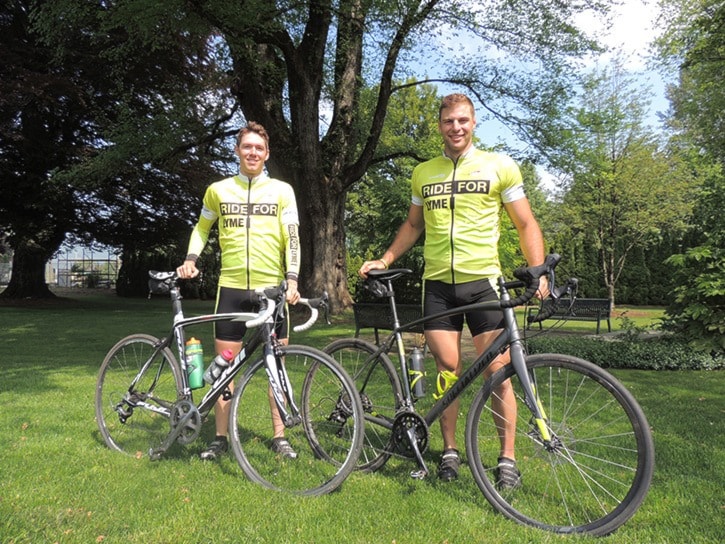May's focus on lyme disease is over. But for lyme sufferers, there is no special month or date set aside to reflect. For them, a focus on lyme disease happens every moment of every day. It is a debilitating disease that demands continuous attention, forcing life as they once knew it to shift dramatically.
Harrison resident Stephanie Baziuk is one such victim. Baziuk identified her lyme disease two years ago, but suffered her whole life from its effects. She can trace the disease in her family back to her grandfather, who contracted it while fighting in World War I.
Lyme disease is a "serious illness" typically caused by the bite of an infected blacklegged tick. Baziuk describes living with lyme like “a quiet burn, basically sabotaging your health over the long term."
Baziuk has faced frustration in the Canadian health care system, where she feels that doctors do not understand lyme disease well enough to test or treat it, and underfunding of public resources for lyme sufferers.
Ontario residents Daniel Corso and Tanner Cookson hope to help lyme sufferers like Bakiuk. They are currently biking across Canada in an effort to raise awareness and funding for the Canadian Lyme Disease Foundation. The two young men were driven to do something after their friend was stricken with the disease. Before her tick bite, Adelaine Nohara lived an active and satisfying life. After it, she lost her strength and independence.
"My brain became so handicapped that I could scarcely read or write," she writes on the rideforlyme.ca site.
Corso says before his friend contracted lyme disease, he knew little about it. When they rolled into Agassiz, they were only on day two of their official journey. But they have already heard plenty of stories and met lyme victims through their fundraising efforts for the journey. With the dialogue taking place, they feel they are already making a difference. Corso says it amazed him to start seeing just how many lyme disease victims there are.
"The numbers are literally uncountable, well into the thousands probably here in B.C.,” comments Corso.
Corso and Cookson are looking to raise $100,000 for the Canadian Lyme Disease Foundation through their ride. They are also dedicating each day of their ride to a different person suffering from lyme disease. If you would like to nominate a name to them or donate, check out their website at www.rideforlyme.ca.
According to the Canadian Lyme Disease Foundation, there are more than 100 different symptoms of Lyme disease. Symptoms are broad, but can include fatigue, skin rash, numbness or tingling, nervous system disorders or an abnormal heartbeat.
Symptoms can show in as short a time as a few days or as long as months to years, and it is difficult to diagnose from a standard blood test.
According to Canada’s Public Health Agency, populations of blacklegged ticks, which can carry lyme disease, are growing. They can be active throughout much of the year but the risk of a tick bite is highest in the spring and summer. Health Canada reports blacklegged ticks are most often found in forests and overgrown areas between woods and open spaces, and lists Southern British Columbia as one of the “most abundant” areas for the ticks. Ticks are tiny, and can range from the size of a poppy seed to a pea.
Lyme disease is spreading, according to the Public Health Agency of Canada.
How to protect yourself:
• Wear closed-toe shoes, long-sleeved shirts and pants
• Pull socks over pant legs to prevent ticks from crawling up legs
• Wear light-coloured clothes to spot ticks easier
• Use insect repellents that contain DEET (active ingredient to keep bugs away) or Icaridin. Repellents can be applied to clothing as well as exposed skin. Always read and follow label directions
• Shower or bathe within two hours of being outdoors to wash away loose ticks
• Do a daily “full body” check for ticks on yourself, children and pets
• f you find a tick on your skin, removing it within 24-36 hours of the tick bite usually prevents infection
source: .http://www.phac-aspc.gc.ca
